#migraine awareness
Explore tagged Tumblr posts
Text

for my migraine girlies
#psyduck#psyduck art#pokemon#pokémon#pokeblr#pokemon art#fanart#psyduck fanart#migraine awareness#game freak#the pokemon company
57 notes
·
View notes
Text
Headache vs migraine
I see a lot of misinformation around headaches and migraines so i wanted to clear some stuff up
Migraine: a debilitating headache disorder, though it’s a headache disorder theres a lot more than headache to it. Migraine causes migraine attacks (often called migraines) which often have 4 phases and cause a wide range of symptoms including (but not limited to) sensory sensitivity, weakness, vertigo, nausea and so much more. What symptoms you have can depend on what subtype of migraine you have and just how you experience it. And even though its a headache disorder not everyone with it will always have a headache with attacks. Pain is sometimes sharp and one sided but not always. They usually fall between 4-72 hours but again not always
Headache: pain in the head or face often a symptom of something like headache disorders, other neurological disorders, dehydration, and more. Headaches can also be extremely debilitating and can happen in a variety of ways like location, severity, duration, and type of pain. That may depend on the cause.
Do not use a diagnosis tool and if anything about your headache or migraine changes see a doctor
#disabled#queer cripple#neurological disorder#disability#physically disabled#neurological disability#migraine awareness#chronic migraine#migraine#headache#headache disorder#chronic headaches
12 notes
·
View notes
Text

~ Headdache ~
A personal illustration featuring my OC Myliah. With things that have been happening recently I wanted to draw something more focused on myself.
Hope you like this illustration ♥

#fantasy#art#fantasy art#oc#illustration#character design#myliah#my oc#vent#vent art#migraine#migraine awareness#chronic illness#chronic pain#fibromyalgia#headaches
86 notes
·
View notes
Text
Todays episode of
Living with Migraines:
I finally felt well enough to make myself a chicken quesadilla. I used a leftover take out packet of picante sauce. It was wonderful until I found the corner of the sauce packet INSIDE my quesadilla.
#migraine warrior#migraine awareness#chronic migraine#migraine#chronic illness#chronic pain#invisible illness#spoonie#brain fog#shitposting#me irl#meirl
10 notes
·
View notes
Text
Heads up photosensitive epileptics and people who get migraines, there's is a SWATCH AG advert on YouTube that shows rapidly changing backgrounds and watch colours that could trigger a seizure or migraine.
#photosensitive epilepsy#epilepsy problems#actually epileptic#epilepsy awareness#epileptic#epilepsy#migraine prevention#migraine awareness#swatch ag
66 notes
·
View notes
Text
i’m saying this here because i can’t say this to people in my real life. and also if you have loved ones with migraines, please don’t say this kinda stuff it’s not comforting
my hair is greasy because i’m in too much pain to shower
exercise makes my migraines worse
i do drink lots of water
yes i’ve talked to my doctor about it, no nothing they say helps (ik they’re trying though)
i cant just avoid stressful situations, life isn’t like that
i know i’m not around a lot, and i hate it
i’m always tired because migraines drain me
i don’t know why i have a migraine
i don’t know why they’re almost everyday and none of my doctors know either (probably genetics)
going outside doesn’t help when i’m in too much pain to stand without help
#migraine awareness#migraines#migraines suck#not to sound like a bitch#but i’m so tired of getting told this shit everyday
7 notes
·
View notes
Text
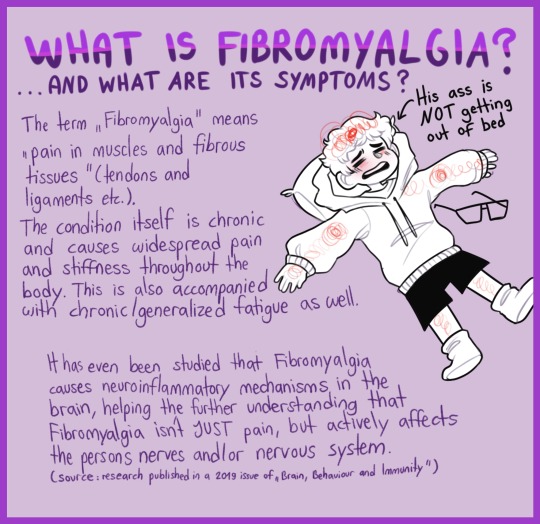
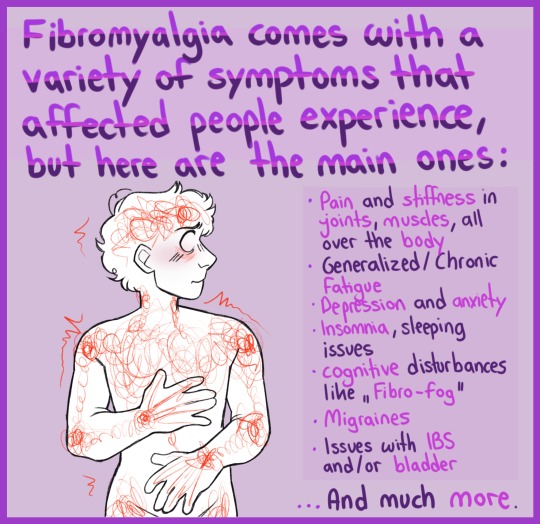

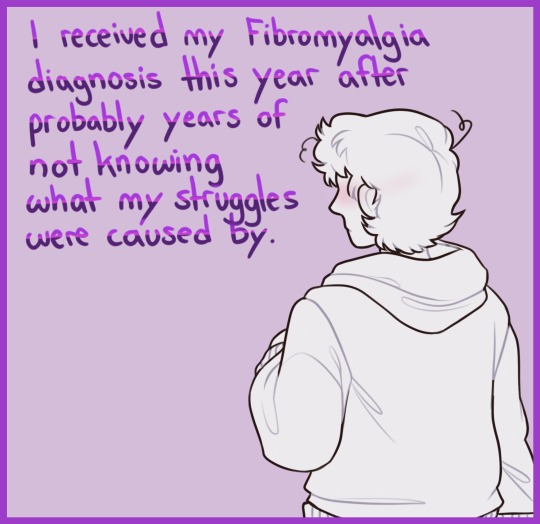



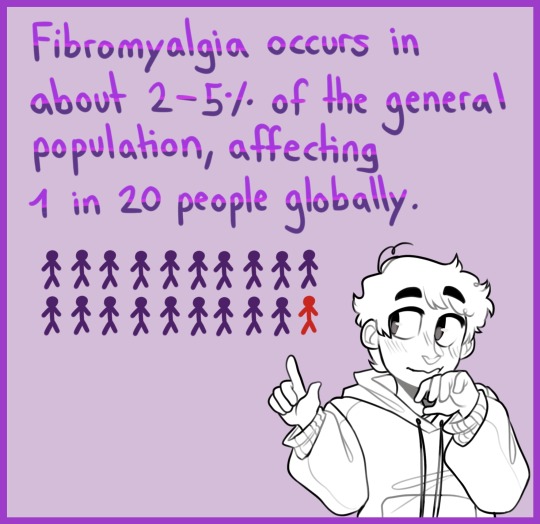
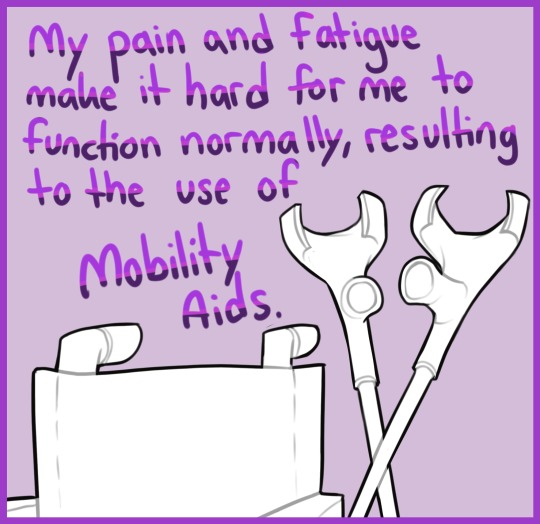

Yesterday the 12th of May was Fibromyalgia awareness day. I'm a little late uploading it, but spreading awareness is being done nonetheless. Lots of love for my chronic pain people!! <3
#fibromyalgia#fibromyalgia awareness#chronic illness#chronic pain#disabled#disability#disabled artist#chronic fatigue#chronic fatigue syndrome#hidden disability#invisible disability#spoonie#chronic migraine#migraines#artist
28K notes
·
View notes
Text
A Comprehensive Analysis of Endocannabinoids' Function in Migraine Regulation
Migrane Awareness Week 4 - 13th September

Introduction
Migraines are a debilitating neurological disorder that affects millions of people worldwide. They are characterised by severe, recurring headaches, often accompanied by nausea, vomiting, and sensitivity to light and sound. While the exact cause of migraines remains unknown, researchers have been investigating the role of endocannabinoids in regulating migraines and providing potential relief for sufferers. This article will explore the endocannabinoid system and its connection to migraines, while avoiding any discussion of the medical uses of CBD.
Understanding the Endocannabinoid System

The endocannabinoid system (ECS) is a complex cell-signalling system that plays a crucial role in maintaining homeostasis within the body. It is composed of three primary components: endocannabinoids, receptors, and enzymes. Endocannabinoids are naturally occurring compounds that are similar in structure to the active compounds found in cannabis. The two primary endocannabinoids are anandamide and 2-arachidonoylglycerol (2-AG).
These endocannabinoids interact with receptors throughout the body, particularly the CB1 and CB2 receptors. CB1 receptors are primarily found in the brain and central nervous system, while CB2 receptors are more commonly found in the immune system and peripheral tissues. Enzymes are responsible for breaking down endocannabinoids once they have fulfilled their purpose.
Endocannabinoids and Migraines: The Connection
Research has shown that individuals who suffer from migraines often have altered levels of endocannabinoids in their system. This has led scientists to investigate the role of the ECS in the development and regulation of migraines. There are several ways in which the endocannabinoid system may be involved in migraine pathophysiology:
1. Modulation of Pain Perception
One of the primary functions of the endocannabinoid system is to modulate pain perception. Endocannabinoids can bind to CB1 receptors in the brain, which are involved in pain processing. This interaction can lead to a reduction in the sensation of pain, providing relief for migraine sufferers.
2. Regulation of Inflammation
Inflammation is thought to play a significant role in the development of migraines. The activation of CB2 receptors by endocannabinoids has been shown to have anti-inflammatory effects. By reducing inflammation, endocannabinoids may help alleviate the severity and frequency of migraines.
3. Control of Serotonin Release
Serotonin, a neurotransmitter involved in regulating mood, sleep, and appetite, has been implicated in the pathophysiology of migraines. Imbalances in serotonin levels can contribute to migraine attacks. Endocannabinoids have been shown to modulate serotonin release, potentially providing a means of regulating migraines through this pathway.
4. Vascular Effects
Migraines are often associated with changes in blood flow within the brain. Endocannabinoids can influence the dilation and constriction of blood vessels, which may impact the development and progression of migraines.
Conclusion
The endocannabinoid system plays a vital role in maintaining homeostasis within the body, and its connection to migraines offers promising avenues for future research and potential therapeutic interventions. By understanding the role of endocannabinoids in regulating migraines, researchers may be able to develop novel treatments that provide relief for millions of people who suffer from this debilitating condition.
If you wish to help support and raise awareness about Migraine, you can donate here to The Migraine Trust.
#migraine#chronic migraine#headaches#migraine awareness#migraine awareness month#health#cbd#cannabis#endocannabinoidsystem#cbdoil#cbdhealth#feelgreatagain#budandtender
0 notes
Text

chronic head pain
#temperance of sleep#diy music#musicians of tumblr#film stills#migraine awareness#transallegheny lunatic asylum#chronic pain#urbex#performance art#visuals
0 notes
Text
I just learned that June is migraine awareness month. I have chronic migraines. In fact, just earlier this week, I had one of my worst ones I’ve had in a little while. I was having a panic attack from how bad the pain was. That did Not help. Luckily I’m seeing a neurologist soon. Maybe he can help with this. At least make them not so severe. Migraine is the leading cause of disability, so I’ve learned. And my personal most hated one. I often say I could deal with everything else that I deal with if I didn’t have to also deal with chronic migraine. That may be slightly hyperbolic considering everything I do deal with but in the midst of a migraine…. It feels very true. I recorded how many I had in my. And this number may be off because I did forget I was doing this at one point but I recorded 14 migraine days last month. As for June, I’m not officially recording them but I’ve already had 6 migraine days. It feels like I’m living off excedrin and ice packs sometimes. So… happy migraine awareness month. I’d prefer to be… less aware.
#chronic pain#disabled#chronic illness#chronic fatigue#chronic migraine#disability#diagnosis journey#migraine awareness#migraine awareness month#vent post#rambling
1 note
·
View note
Text


Migraine Monster
0 notes
Text

did you know it's migraine awareness month? are you aware of migraines? you should be.
#paper craft#scissors craft#isat#in stars and time#isat fanart#siffrin#isat siffrin#that caption is accidentally so threatening... it fits.#i was gonna make this purple to fit the migraine color bUT UM....#I.. I LIKE RED...... I LIKE RED SO MUCH...#IMAGINE ITS PURPLE SOMETIMES IDK!#anyways happy migraine awareness month!!! i'm so aware of migraines!!!!!!
2K notes
·
View notes
Text
Its Tourette’s awareness month (may 15 - june 15) and migraine and headache awareness month (june). I have chronic migraine, headaches, and Tourette’s, so i’m gonna talk about all of them and having them together
Firstly, migraine is way different from headaches. Migraine is a neurological disorder that causes attacks of symptoms a common one and a very well known one is headache but it is not required. Headache is pain or discomfort in the head or face. Both can be severe and disabling but they are not the same but since the awareness month is for both this post will talk about both
Tourettes and migraine
- Tourette’s and migraine are both neurological disorders and have their similarities and differences. Similarities include (not everyone will experience and these) issues with moving, headache, certain psychological symptoms, ect. Differences include (not everyone will have these) hallucinations (migraine symptom), one sided weakness (migraine symptom), tics (Tourette symptom)
- migraine and Tourette’s can co occur in some people and i am one of them. For me Tourette’s and migraine can interfere with each other, worsening one and other and making things more difficult for me. My migraine symptoms often get worse when i move and Tourettes makes me move a lot, this can lead to increased pain, nausea and vomiting, and other symptoms. Some of my tics can also trigger my migraine attacks and some of the symptoms i have in both of them, like issues walking, can be very bad when both of those disorders are acting up.
Tourettes and headache
- Tourette’s and headache may co occur too and sometimes the tics may cause a headache. I’ve had tics where i hit my head with my hands or hit my head on something, this has caused me headaches or worsened what i already have.
#disabled#cpunk#cripple punk#queer cripple#neurological disorder#disability#physically disabled#neurological disability#neurodivergent#tourettes#tics and tourettes#tourette syndrome#painful tics#chronic migraine#migraine attack#migraine#headache#migraine awareness#migraine awareness month#Tourette’s awareness#Tourette’s awareness month
14 notes
·
View notes
Text
Imposter syndrome is a bench

Image description: drawing of a nondescript person with a tired/unimpressed expression on their face right next to a drawing of someone vibrating with excitement
Caption:
Me: "I must be faking my illness. I went on a walk yesterday."
Also me: "MY WALKER AND SHOWER CHAIR ARE ON THEIR WAY"
#chronic illness memes#disabled memes#dysautonomia memes#chronically ill memes#imposter syndrome#disabled#chronic illness#chronically ill#chronic pain#chronic disability#melody morningdew#chronically fatigued#fibromyalgia#undiagnosed chronic pain#undiagnosed chronic illness#chronic migraines#chronic fatigue#hypermobile ehlers danlos#ehlers danlos awareness#postural orthostatic tachycardia syndrome#tachycardiac#tachycardia#pots#dysautonomia#undiagnosed something#undiagnosed disability#invisible disability#invisible illness#disabilties#mobility aid user
792 notes
·
View notes
Text

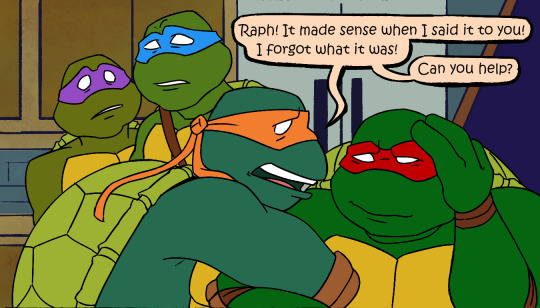
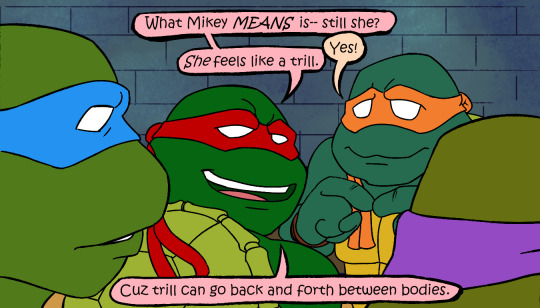




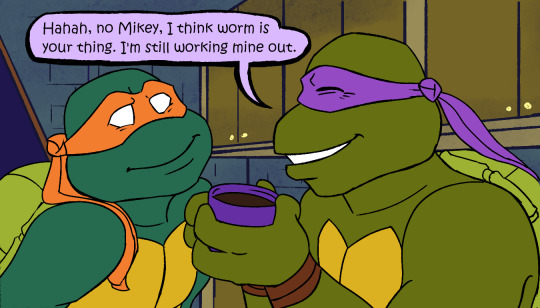
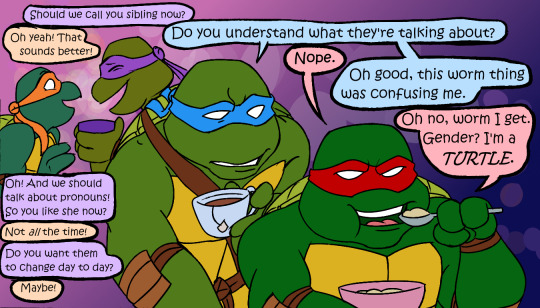
hi these are my emotional support gender euphoria turtles. all of them. i hope you like them too.
previous part | turtle trek series
#tmnt#tmnt 03#tmnt 2k3#tmnt 2003#michelangelo splinterson#tmnt michelangelo#raphael splinerson#donatello splinterson#leonardo splinterson#03 mikey#03 raph#03 donnie#03 leo#tmnt 2003 mikey#art#my art#turtle trek#ima be honest ive had a migraine all day i did my best w the backgrounds i just really needed to do this for myself#also leo isnt cis hes just not aware of a god damn thing going on#raph is he just doesnt care
1K notes
·
View notes
Text

☆ even the gods bleed [ pt 4 ]
{☆} characters arlecchino, furina, lyney {☆} notes cult au, imposter au, multi-chapter, gender neutral reader {☆} warnings blood {☆} word count 3.7k {☆} previous [ 1 ] [ 2 ] [ 3 ]
Fontaine was bathed in darkness, not even the moon daring to illuminate where the common man fears to walk. The streets were bleak and empty save for the constant, rhythmic ticking and clanking of machines marching on endlessly, dauntlessly wading where even the bravest dared not to venture. Not even the sharp click of the Gardes boots followed the occasional hisses of steam as they walked the barren streets.
It was haunting, and it'd been like that for days now. It showed little signs of stalling in the slightest, too. Every inch of Fontaine was practically crawling with Gardemeks– like a swarm of rats skittering about.
Arlecchino had secluded herself in the Hotel Bouffes d'ete for days at this point, waiting– biding her time. Her nails clicked against the wood as she tapped at the table in a stilted rhythm, the subtle click of the clock mixing into the clanking outside, weaving in and out of earshot as the patrols slipped by. She reached forward after a moment of thought, reaching for the white king.
She leaned back against the chaise, tilting her head just enough to catch a glimpse of a patrol of Gardemeks as they vanished behind the rows and rows of buildings. It wasn't enough to keep her attention for long, however, her features twisting in disinterest as she glanced back to the chessboard– and the letter neatly resting beside it. The seal was unmistakable and a sobering sight, demanding her attention– the soft hues of blue etched into the shape of a dragon stared back at her in a way that almost unsettled her.
She had already parsed through it's contents hundreds of times, but she was met with only vague, flowing script that only served to irritate her more then anything– it filled the page top to bottom yet managed to say nothing at all. Her hand reached out again, but instead of reaching for the letter she plucked the black rook from the board, setting it down with a soft click.
Arlecchino had all the time in the world to sit back and observe her prey, but all that time would be useless if she lacked the information to act.
And he was quite tight fisted about it, evidentially. None of her inquiries or attempts to decipher any potential codes in the letter left her empty handed. She could not act without even knowing the reason for his summons– it was almost worded like a personal affair rather then one would expect for a foreign diplomat. In truth, she'd expected a scalding report on her operatives, but it lacked any mention of anything of the sort.
She was no stranger to people masking hostility behind pretty words and compliments, not that it was ever unwarranted per se– the Fatui did not create connections through honesty and genuine kindness. They have strong armed more then their fair share of people into cooperation to the point distrust is all the Fatui are met with outside of Snezhnaya. Every word was meant to conceal the deceit, every action meant to conceal the price later paid.
So she had been..skeptical of the letter, to put it lightly. She doubted the Iudex of all people would offer a hand to the Fatui without a price attached– a trap, perhaps, meant to lure in the most powerful piece left on the board. Her eyes narrowed, reaching for a white rook and moving it to the right.
Or he was hiding something. Something that he simply couldn't risk getting out to anyone, not even the Divine themself. A tempting prize, whatever it was.
..A dangerous prize, too.
She'd considered burning the letter and forgetting it all together– the risk was great, and she couldn't risk getting caught up by whoever else the Iudex may have on his side of the board. But she could hardly pass up the challenge and the prize that he fought so hard to keep from prying eyes and ears. Even her agents came back empty handed each time. She lazily picked up a black rook, sliding the white pawn aside.
"Lyney," Arlecchino drawled, crossing one leg over the other and turning her gaze to the door as it slowly creaked open. The pale visage of Lyney stepped through, though his siblings were noticeably absent. The weariness that weighed down on his shoulders was apparent in the slightest furrow of his brows and the subtle creak of leather as he clenched his fists behind his back. "Father." He choked out, the title dragged out by the sharp inhale and shaky exhale.
He looked out of breath, she noted.
The silence that lingered after the small exchange was punctuated only by the click of another chess piece being moved. She sets aside the black rook, letting it sit among the dozen other pieces that had been wiped off the board. She can see the conviction glinting beneath the fog of exhaustion, but if he would utilize it was another matter all together.
He had seemed to make his choice quickly, at the very least.
"Our contacts and operatives within the Fortress of Meropide have gone silent– all we have is their final confirmed missive.." His voice is confident, but it is rigid as the words spill from his lips. He takes a sharp step forward, unfolding his arms from behind his back and opening his hands– the small, water stained and messily folded note catches her eye, plucking it from his palms with a half hearted interest. "They believe the Duke left the Fortress of Meropide..and that he may be coming to the Court of Fontaine."
Her eyes narrow dangerously, nearly crumpling the thin paper in her hands– yet just as quickly, she collects herself.
But she cannot get rid of the bitter taste on her tongue, lingering as she sets down the note and slides it to the side, her lips pursed into a thin line.
So the Iudex had shown one of his pieces..she tightly grasps a black rook, tipping over the white rook, letting it roll against the board.
If the Duke was involved, things were much more complicated then she expected– he would be a problem, she was certain. She couldn't blame the lamb for fearing the wolf, either. Whether her agents had been killed or captured by the man mattered little. He had his ways, and he was a force that could instill fear in even them.
Which meant the possibility that her operation was already compromised was far too real.
What had the Iudex so concerned he had gone through the trouble of bringing in the Duke and herself? The Fatui was one thing, but to specifically request one of it's Harbingers..
The Prophecy? The thought had her clenching her fist, but..no. If it were to rear it's head now, the Iudex could simply not afford to waste time on his contacts deciphering his nonsensical script– If the prophecy were to be the issue, there time would be limited to mere minutes in the worst of cases. Which meant it was worth biding his time in order to ensure absolute secrecy.
So if not the prophecy, then what?
Her next moves were..limited. She was already walking on eggshells considering her position and the reputations of the Fatui– especially with a Harbinger in the midst. If they caught wind of her operations, they'd weed out her operatives and be on guards for any snakes that lingered in their garden.
She reached for the chessboard again, picking up one of the white rooks from the board with a scowl. The sharp click as she sets down the white rook and sets aside the black pawn draws a shaky inhale from Lyney as she moves another black pawn, the dull click of the pieces drowning out the distant clinking of machines.
..A draw, perhaps.
The pieces were all falling into place– the players of this game were slowly being revealed. Whether she could secure her victory..she was unsure.
She wasn't even sure who her opponent was. Only that the Iudex himself was but another piece in their game.
Arlecchino reached for the board again, yet this time she hesitated. Perhaps she could still swipe the win from beneath them, if she played her cards right.
She would simply have to capture the king– or, if need be, let it end on a draw. Either way, she would not concede. She could not afford to concede. Down to the last piece, she would drag out this match until she was in a position to force their hand into the outcome she desired.
She stood slowly, picking up the king piece and observing it for only the briefest of moments before she set it down on the table, taking measured steps around the table and across the room. She was hunting a much more dangerous quarry today– it would be no simple runaway traitor this time.
"Do you remember the directive?" She inquired coldly, her hand lingering on the door for that long, tense moment. "..Yes, Father." Lyney faltered, taking a hesitant step back and bowing at the waist. "Then do not stray."
All that was left was the silence and click of the door shutting behind her as she disappeared down the hall, her boots clicking harshly against the floorboards. The rest of the agents knew better then to linger in her path as she stepped down into the lobby, adjusting the cuffs of her sleeves. She barely even acknowledged the Fatui agent standing at the ready by the heavyset doors, their gloves hands held out with her cloak held loosely in their palms. She quickly snagged it from them, tugging it over her board shoulders and clasping it around her throat.
With a quick tug, she brought the hood up over her head to conceal her sharp features, lifting her hand and placing a neatly folded note within their waiting hands. She had only one chance to make the right moves and secure her victory– no matter the cost.
Each piece had it's purpose.
Oft, that purpose was a bloody and horrible end– but for the grand goal of the Fatui built on the backs of the dead, it was an honor.
She didn't bother speaking a word as she dismissed them with a wave of her hand, pushing open the heavyset doors and stepping out into the barren, damp streets. The rhythmic clink and whir of Gardemeks was still distant– she needed to move. Her boots clicked and splashed in the rain soaked stone of the streets as she slithered between the buildings, ducking through the openings in the patrols.
It was almost too easy.
She tilted her head back, taking in the towering Palais Mermonia with a scowl, her hands clenched into fists. The final moves were being played– the king was within her reach, yet she felt no more confident then when she began.
The air carried a sense of unease, thick and heavy, filling her lungs until she felt her breath still in her chest– listening to the empty, bleak night that seemed so..quiet.
She'd done her fair share of research, had more then her fair share of her agents try to peer into the Iudex's office or the Archon's supposedly hidden chambers, but every attempt was a failure. She had to give them credit, they were quite elusive when they wished to be. Though now she only thought about it bitterly– this was all a risky gamble, in the end, and only time would tell if it paid off.
With minimal effort, she'd managed to pull herself to the flat, tiled roof, eyeing the massive tower peaking out of the center cautiously. At least here the wandering patrols down below weren't likely to notice her..she could hear them passing by the spot she'd been in only a few minutes ago, just beneath her. She pulled the hood further over her face, peering through the sheer darkness of the night for any oddities, but it was almost impossible to see in the dark.
Her boots clicked softly against the tiles as she approached the tower jutting out from the Palais, her hand gliding along the smooth stone, pressing against odd indents or crevices. If it was for the Archon's chambers, she doubted they made it very difficult– she'd only met the woman once, but she doubted the Iudex make it all that complex just from a brief glance. And it surprised her little when one of the stones sunk into the wall, gears whirring as the walls split open to reveal a stairwell straight into an inky black hall. Only the barest hint of light peaked under the door at the bottom, but it's occupants must have heard her, considering it went out not a moment later.
She cautiously stepped down into the small crevice, her breath visible in the bitter cold air– her shoulders tensed at the subtle sound of muffled footsteps behind the door, her vision flaring with a molten heat between her shoulder blades as she reached for the worn handle of the door. The heat of her vision was enough to just barely heat the metal, her vision flaring like a quickly building inferno.
Arlecchino was prepared for a fight, if it came down to it.
The door creaked as she pressed against it, shoving it open with a grunt of effort and surveying the room with narrowed eyes and a biting remark on the tip of her tongue– the lavish opulence was expected, she supposed, but the lack of the towering figure of the Iudex was not.
Yet before she could get a word in or even take in her surroundings properly, the light flickered back on and she had to squeeze her eyes shut with a hiss at the sudden brightness. She could hear the door being shoved closed behind her, the hurried footsteps retreating just as quickly as her eyes adjusted to the light.
..This was a joke, wasn't it? It had to be.
She'd expected the Iudex, perhaps even the Duke if she'd been unlucky, not the Hydro Archon. She had half the mind to test her worth as an Archon then and there, her temper flaring like an uncontrollable blaze, barely kept at bay. It took all her self control to force herself to smile politely at the woman rather then snarl.
"Miss Furina," She sneered beneath her hood, x shaped pupils locked onto the startled, trembling Archon with thinly veiled contempt. "What a..pleasant surprise. You'll have to forgive my manners, I assumed I was meeting with the Iudex." She observed her body language carefully– the way her eyes darted about like a frightened rabbit seeking escape, the slightest tremble of her lips..
Arlecchino opened her mouth to offer another scathing remark, but her jaw audibly clicked shut as her entire body seemed to lock up. Even her vision went cold against her back, a chilling feeling creeping up her spine as someone, or something, crept up behind her. Their footsteps were almost silent, the slight rustling of their clothes the only thing she could hear over her heart pounding against her ribcage.
Arlecchino had always prided herself on being on the other end of that sensation– she was the monster, and her target was the prey frozen like a deer between the hunters crosshair.
It was a chilling feeling to have the dynamic shifted on it's head.
She couldn't even swallow, her jaw clenched so hard she could hear it creak as she tried to reason with her quickly splintering mind– a futile effort, her joints locking up almost painfully. Black spots were quickly swallowing her vision from the lack of air in her lungs, the sound of shuffling behind her barely audible over the ringing in her ears.
For a moment – a moment too long to have only lasted the seconds that it did, yet so quick it gave her whiplash – she thought she would hit the floor dead before she could even glimpse her assailant.
And then it was gone. She came crashing back into reality with a startled inhale, her lungs burning and her knees nearly buckling under her. The instinct to lash out and kill whoever had done it was intense, yet she couldn't bring herself to move even a finger– it would be so easy to twist around and ignite them with searing flames, but her feet were rooted in place.
She almost didn't notice the surprisingly gentle hands unclasping her cloak, tugging it off her shoulders, if not for the sheer intensity of the presence still lingering behind her. Her mind was still fractured, struggling to right itself after the ordeal, and it had her seething.
"..Are you certain you held back enough?" Furina croaked, the normally soft lilt raspy and almost hoarse. "Not– not that I doubt your capability, most Divine!"
Arlecchino felt her nails dig harshly into her palms, heat swelling beneath her skin– Divine? Had she lost her mind? The Divine was..
The Divine was upon their throne where they belonged. She'd seen them!
"Hm. Well, maybe? Sorry, I didn't think it'd affect you too." Their voice was sickeningly soft as they stepped around her like she wasn't even there, focusing their attention on the Archon who seemed more then delighted about it. "What gave you that impression, most Divine? Aha, I..was completely unaffected, as you can see! Perfectly fine."
Furina let out a small squeak when they pinched her cheek, but the almost affectionate smile that tugged at their lips revealed the lack of malice behind the action.
"You're a bad liar, Furina. You might want to sit down..please?" They didn't take her protests for an answer, gently pushing her to sit on the bed before abruptly turning to face Arlecchino once more, a forced smile on their lips. "Oh, good, you're..uh, not dead. That's good. I thought I fried your brain. Sorry?"
..Had she hit her head on the way here? The Divine should still be on their throne, yet she couldn't shake the weight of their stare– it felt tangible. She felt like she was standing face to face with the stars– galaxies and constellations bearing down upon her.
She grit her teeth and clenched her hands until she felt the sting of her nails against her palms, grounding herself in the pain through the sheer overwhelming nature of their existence.
"You.." She croaks, reaching out with a shaky hand and grabbing them by the collar of their shirt, lifting them up until their feet left the floor– she pays no mind to the startled protests of the Archon. Arlecchino would crush her like a bug before she even got the chance to intervene and they both knew it. "You shouldn't exist– you aren't them, and yet you..you're the imposter, aren't you?" Her grip tightens yet they face her without an ounce of fear, meeting her unyielding glare with a pondering look.
Arlecchino wanted to make them bleed just to see if she could, the urge to sink her teeth into skin welling up in her chest to the point she visibly snarled, her mask of politeness long . "You're the imposter." Her expression falls for a moment before she schools it into one of apathy, setting them back down and holding them there for a moment, finally releasing them after a tense moment. "Or you were supposed to be."
Hers brows furrow– she wants to demand answers, to throttle them for damning them to being nothing more then dolls for the supposed Divine to break at their whim, but none of the words come to her.
"..Why now? The current Divine has been in power for years, yet you descend now?" Her shoulders tensed, lips pursed into a thin line– it's impossible to ignore the truth that lay before her. The Divine is a fraud and this..imposter is the true Divine. How many years had they been in power, now? How many years were they waiting? Why did they wait? Was the suffering of Teyvat not enough? Was the blood that painted the steps of their stolen throne not enough?
She'd personally been on the wrong end of the Divine's wrath– she wonders..had they watched? Had they seen the cruel hand of their imposter and turned their back on Teyvat?
"I.." They hesitated. It made her seethe, her hands clenching into fists at her sides– her vision flickered, flames swelling within it's casing just to be smothered by the presence of the Divine. But once that spark had been lit, she refused to let it go out. "I didn't know."
The answer does not satisfy her. There is an itch beneath her skin that she cannot scratch, a fire that burns in her chest so hot it scorches even herself.
"And what about now? Are you content to cower like prey in the safety of the Palais Mermonia?" She snapped, taking a step forward, her brows furrowed and her glare intense– she can see the slightest bit of worry in their eyes. She revels in it. "Will you let them use your acolytes like pawns? How many more need to be broken on the steps to your throne before you act?"
Again, her vision flares and dims– it refuses to be used against the Divine that created it.
"Have you no answer?"
The room is silent. They do not speak and neither does she.
Even the world itself seems to quiet in the face of her accusations, fury boiling to the surface so hot it incinerated all it touched.
"I will kill them myself."
Their words are quiet, but they are not soft– there is a vindictive, searing anger that explodes out like dying stars within their eyes. The sight of constellations replaced by a void that would not be . The smell of ichor grows stronger– to the point she feels almost lightheaded.
"..I am aware that I have failed in preventing this, but I had no choice in the matter. Still," They muse, their voice like the tolling of bells. A solemn melody that stills the swelling fury burning in her chest, if only for a moment. "I will rectify it– I will tear down their throne of lies and let not even the earth tarnish itself by burying their corpse among it's soil."
They pause for a moment, holding out their hand– scarred and bandaged by the weapons of the devout, yet still they take upon the burden of dirtying their hands to save those who did not save them.
"Do you trust me, Arlecchino?"
Did she?
"Will you help me?"
She exhales heavily, meeting the starry iris' of the Divine with a scowl still tugging at her lips. Arlecchino trusted no one but herself.
"..Yes."
#sagau#genshin sagau#self aware genshin#genshin impact sagau#self aware genshin impact#fic tag#imposter au#genshin cult au#genshin impact cult au#arlecchino#lyney#furina#you do NOT wanna know what i got put thru writing this fic#trying 2 find out where arle was in the few times we DO see her and going down a rabbit hole of fuck fontaine and its layout actually!#I spent like 3 hours looking it up and checking in game it gives me a migraine thinking abt it. ew#anyway trying to write a really smart character is surprisingly difficult when ur as dumb as rocks#also used an actual chess match for this and gave myself an even worse migraine trying 2 make sure i didnt repeat moves or smth#furina doesnt get a spotlight yet just imagine her sitting in the corner trembling like a wet kitten you found on the side of the road#arlecchino goes thru a crisis more at 11#shes a tired single dad shes isnt getting paid enough for this okay#hands u a fic over half the length of the other THREE PARTS#ehe :]#is arle actually on ur side??? is she gonna double cross u???? who knows!!!!!#shes unpredictable she might stab u for funsies#anyway im gonna go nap in a ditch now this took SO LONGGGGG OH MY G-D#also just think acolytes who arent buddy buddy w reader and even resent them is so tasty#bc how r they supposed 2 know reader was a human vibing 5 minutes before their got eebied 2 teyvat..#reader gotta roll up their sleeves and get 2 WORK sometimes murder IS okay#they gotta fix some shit around here and that means committing several crimes all at once. sometimes more#a group can be g-d (just got here) their dragon (neuvi) their cat (archon) their dog (wrio) and their wolf (arle)
469 notes
·
View notes